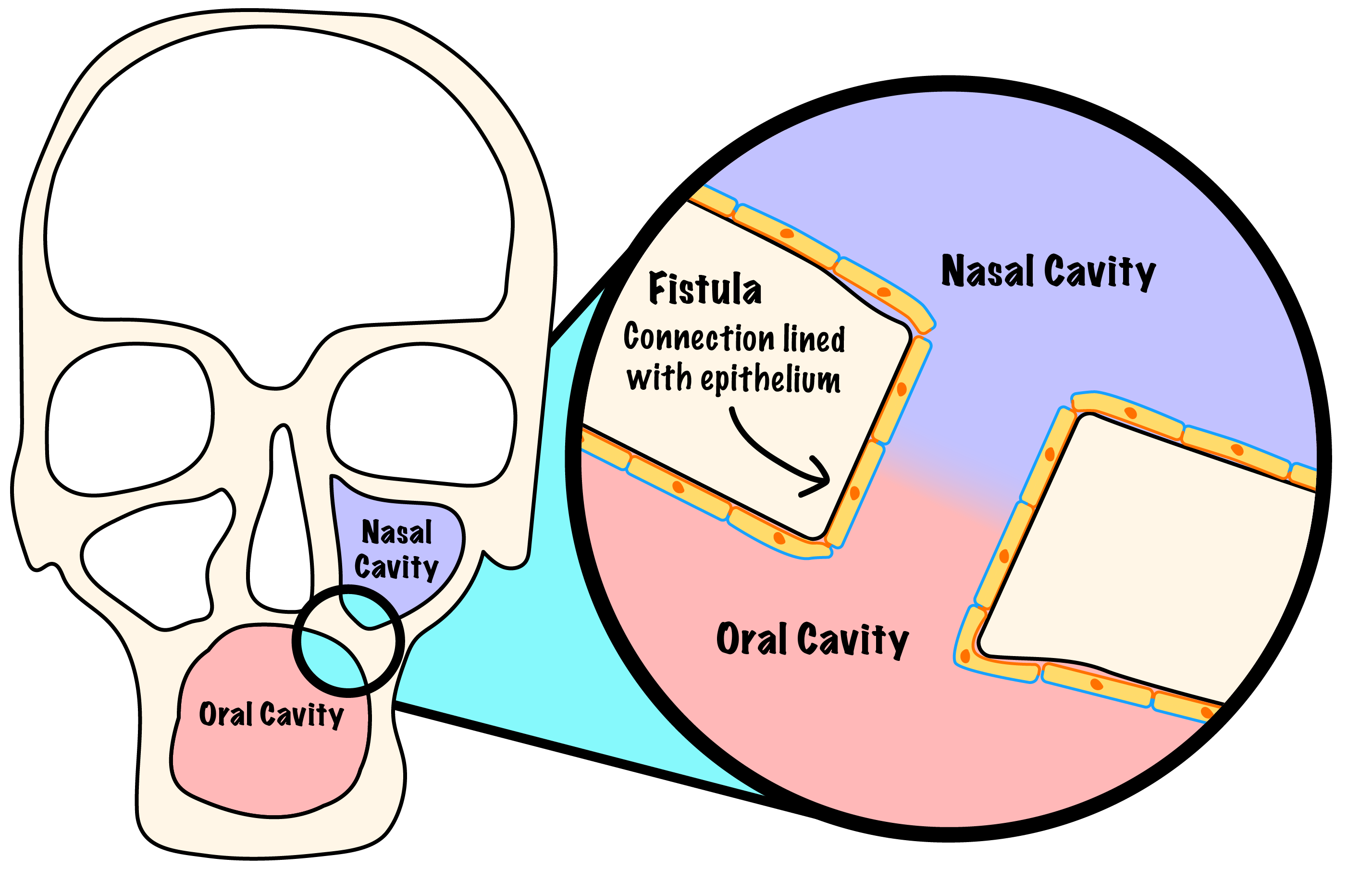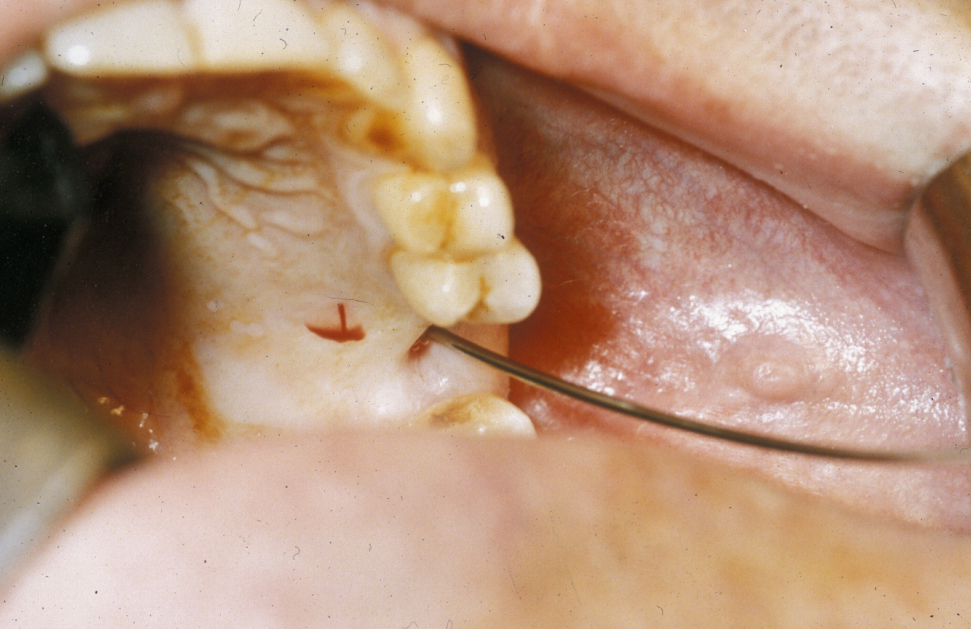Fistula
A fistula is a communication, an abnormal connection between hollow organs or the body surface. This ‘pipe’ is lined by epithelial cells, like other inner or outer body surfaces. A fistula can occur in every part of the body, the most common locations are the intestines (in particular the bowel), blood vessels, the urogenital tract and the head and neck region. A fistula with only one open end is called a sinus tract. Figure 1 schematically illustrates a fistula connecting the oral and nasal cavities.

A fistula is usually a sign of some underlying inflammatory condition, resulting from injury, infection or surgical intervention. The formation of a fistula may be seen as an attempt of the body to eradicate an inflammatory process via the skin or the mucosa (lining of the mouth, for example) by creating a drain for pus. Some fistulas can turn into chronic conditions that may persist for years.
The most common cause for a fistula in the maxillofacial region is a dental abscess, with opening to the mucosa on the inside of the mouth depending on the position of the tooth root. It can rarely open onto the skin (usually from lower front teeth, or a front tooth, onto the chin and may be subjected to multiple ineffective operations by surgeons not aware of the cause). Other common types of fistula are connections between oral and nasal cavity, or connections between the maxillary sinus (hollow space above the upper jaw) and the oral cavity (see Figure 2; this latter type of fistula is a possible complication of tooth extractions in the upper jaw). A cleft palate may be considered a particular type of fistula.

As far as treatment of a fistula itself is concerned, this will obviously depend on location and size of the lesion but in essence is a supportive action in the treatment of the underlying condition – an attempt to treat a fistula without addressing the cause makes little sense.